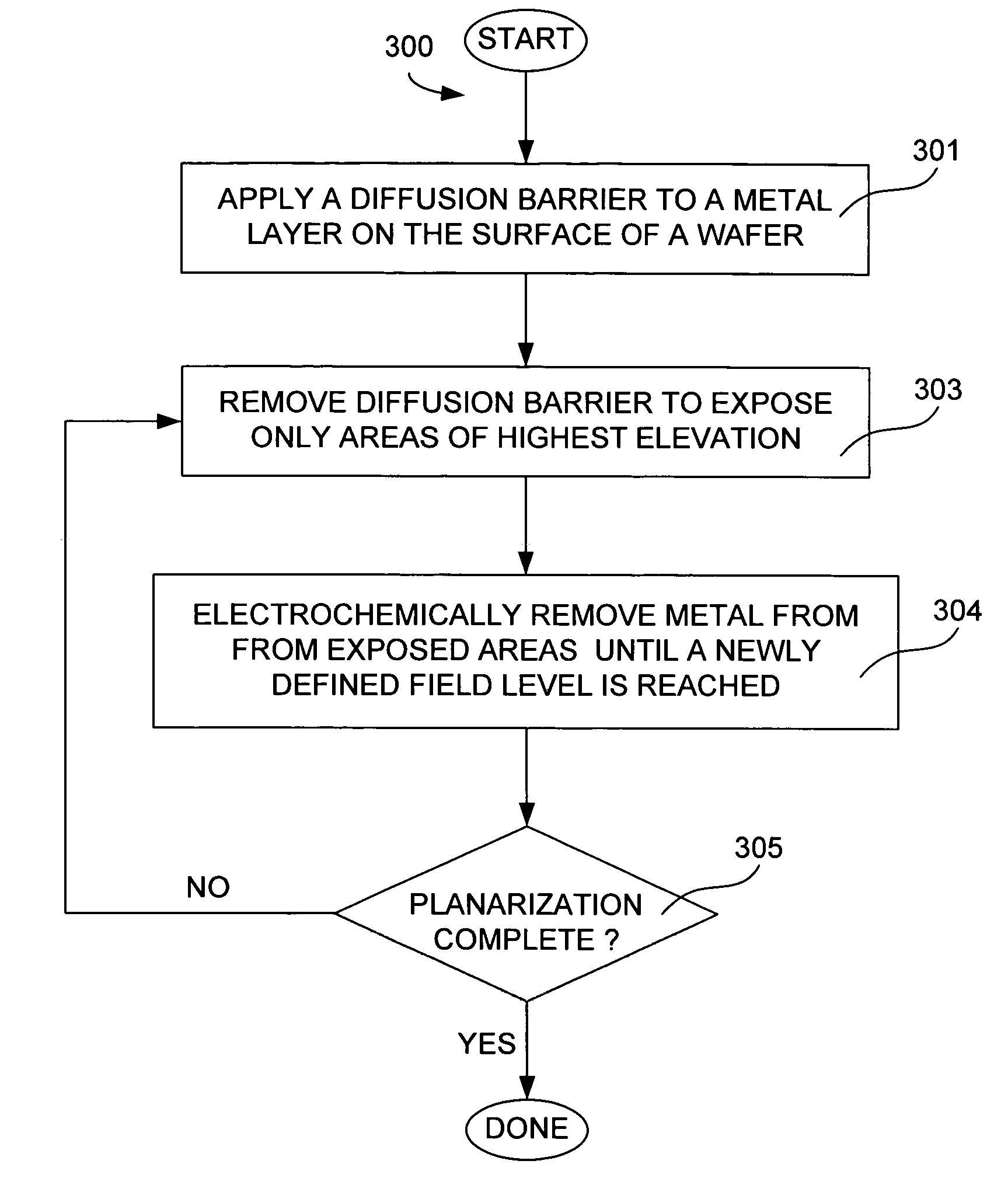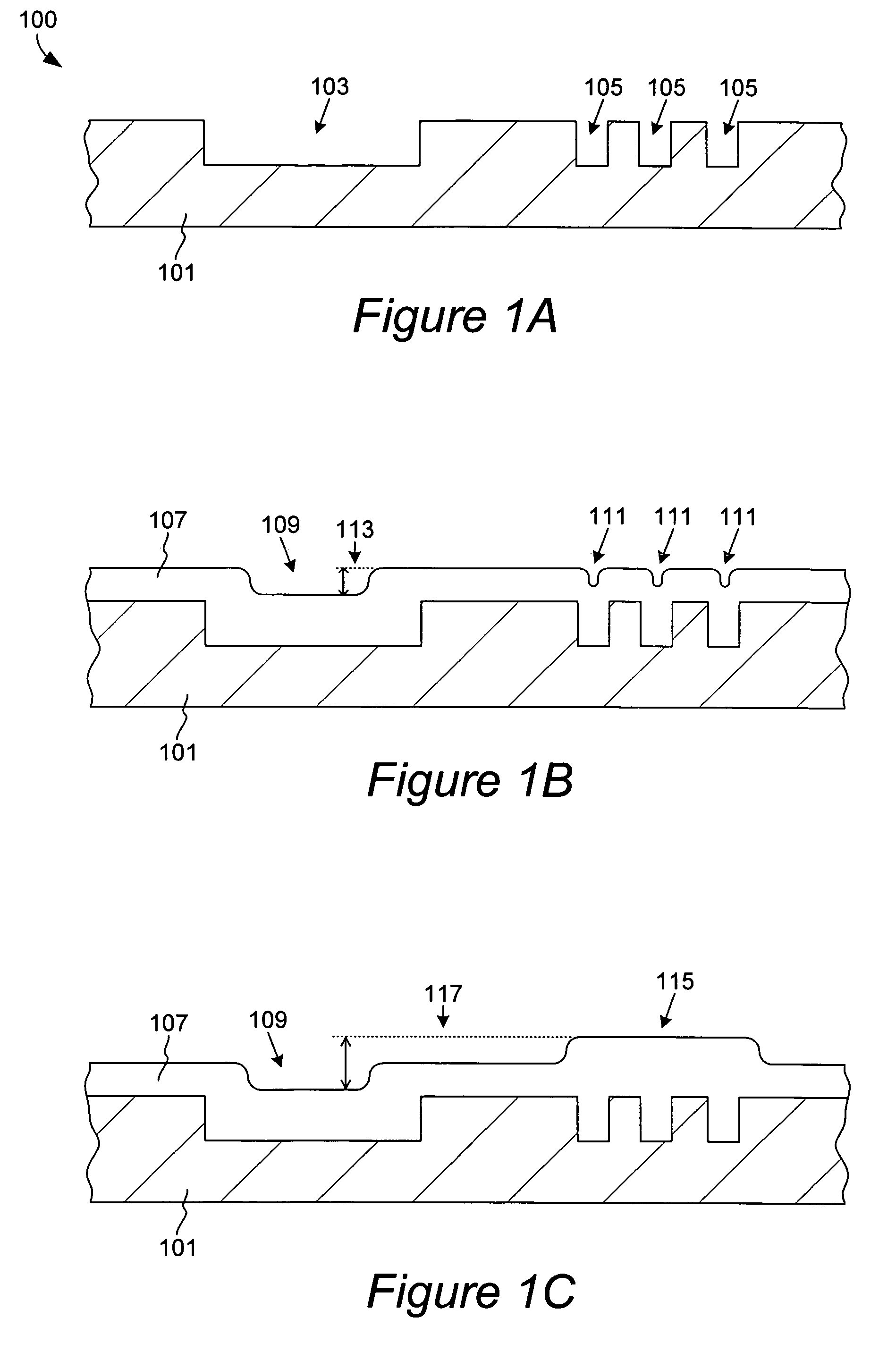Method and apparatus for uniform electropolishing of damascene IC structures by selective agitation
a damascus ic structure and selective agitation technology, applied in the field of apparatus and methods for surface planarization of metal surfaces, can solve the problems of difficult control of cmp polishing techniques, circuit failure, and inability to use, and achieve the effect of small pore size, easy flow, and sufficient porousness
- Summary
- Abstract
- Description
- Claims
- Application Information
AI Technical Summary
Benefits of technology
Problems solved by technology
Method used
Image
Examples
Embodiment Construction
[0032]In the following detailed description of the present invention, numerous specific embodiments are set forth in order to provide a thorough understanding of the invention. However, as will be apparent to those skilled in the art, the present invention may be practiced without these specific details or by using alternate elements or processes. For example, the invention is described in terms of methods and apparatus in relation to electroplanarization of a metal layer for semiconductor wafer processing. The invention is not limited to semiconductor wafer processing, that is, the invention can be used to planarize metal surfaces on other substrates as well. In some descriptions herein, well-known processes, procedures, and components have not been described in detail so as not to unnecessarily obscure aspects of the present invention.
[0033]The invention is primarily described in terms of electropolishing; however, it is critical to understand that the methods and apparatus descri...
PUM
| Property | Measurement | Unit |
|---|---|---|
| widths | aaaaa | aaaaa |
| widths | aaaaa | aaaaa |
| widths | aaaaa | aaaaa |
Abstract
Description
Claims
Application Information
 Login to View More
Login to View More - R&D
- Intellectual Property
- Life Sciences
- Materials
- Tech Scout
- Unparalleled Data Quality
- Higher Quality Content
- 60% Fewer Hallucinations
Browse by: Latest US Patents, China's latest patents, Technical Efficacy Thesaurus, Application Domain, Technology Topic, Popular Technical Reports.
© 2025 PatSnap. All rights reserved.Legal|Privacy policy|Modern Slavery Act Transparency Statement|Sitemap|About US| Contact US: help@patsnap.com



